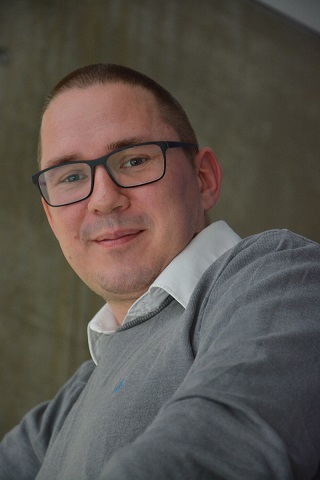Three IFA researchers to receive grants from the Carlsberg Foundation
Thomas Pohl participates in the Carlsberg Foundation "Semper Ardens" research projects, working with quantum control of light.


Thomas Pohl. AU-photo.
What
Transmission and detection of light are widely applied in physical sciences and have become key elements in modern communication and information technologies. Much of these achievements derive from the fact that photons – the elementary quanta of light – are normally devoid of interactions and can therefore carry information in virtually ideal fashion. Yet, the possibility to induce interactions between photons, like the ones between electrons in electronic circuits, may have profound implications and open up new horizons for science and technology. The present project aims at reaching this ultimate form of optical control, that will make it possible to manipulate and even build up light quantum by quantum.
Why
Quantum effects, such as coherence, superposition and entanglement constitute the underlying principles for future optical technologies that may, for example, enable quantum-enhanced imaging, fundamentally secure communication and quantum computing. All of this requires the quantum control of light, i.e. the ability to generate and manipulate light at the level of single photons. With the inherent lack of photon interactions, reaching such capabilities has remained an outstanding scientific challenge and constitutes the central goal of the present project. At the same time, systems of strongly interacting photons hold great potential for discovering entirely new forms of light and advancing our understanding of collective quantum phenomena in a largely uncharted regime of optical science.
How
The project brings together the joint efforts of theoretical and experimental groups at Aarhus University and the University of Southern Denmark to develop, realise and utilise a unique approach to photon-photon interactions. It is based on a special optical medium in which photons propagate a million times slower than the original speed of light and excite atoms so they become several thousand times larger than their normal size. Our research will harness this combination of extreme scales to create and control interactions between photons, and conceive future applications of such new capabilities.
SSR
Our modern society depends on a wide range of technologies and we face global challenges for which new solutions are in high demand. While the ambition to control light and matter at the quantum level is primarily of foundational nature, the outcome of this research holds potential for breakthroughs in communication, sensing and information technologies: Confidentiality and privacy are vital to modern communication and can be ensured if information is encoded in single photons. The ultimate accuracy of sensing in medicine or industrial production can be reached with quantum states of light, while quantum computers, interconnected by photon links, promise to revolutionize our ability to predict properties of new materials and optimize chemical processes to save energy and reduce pollution.
